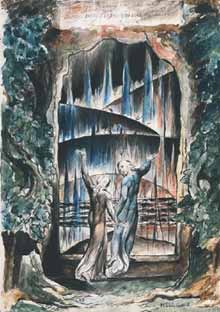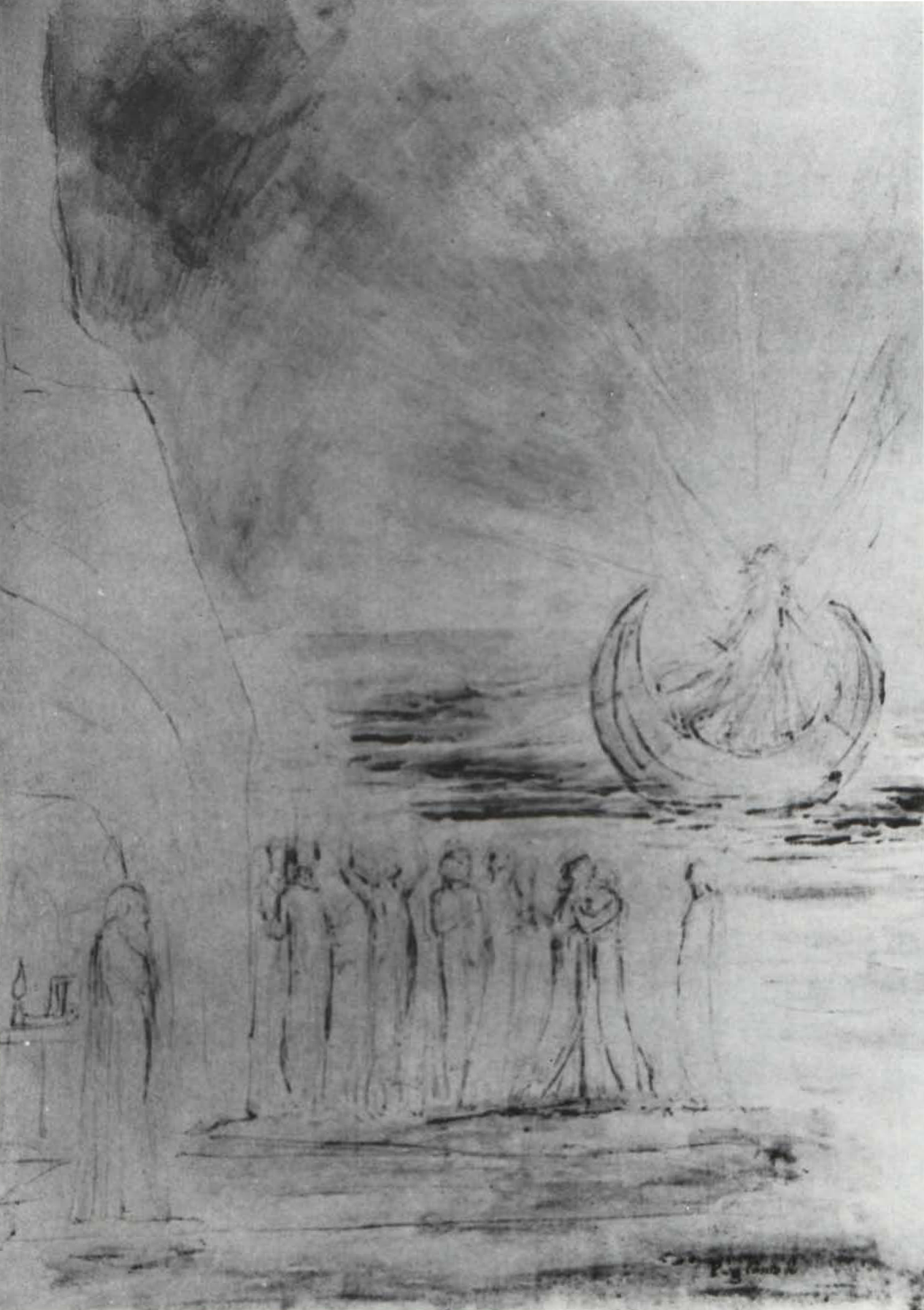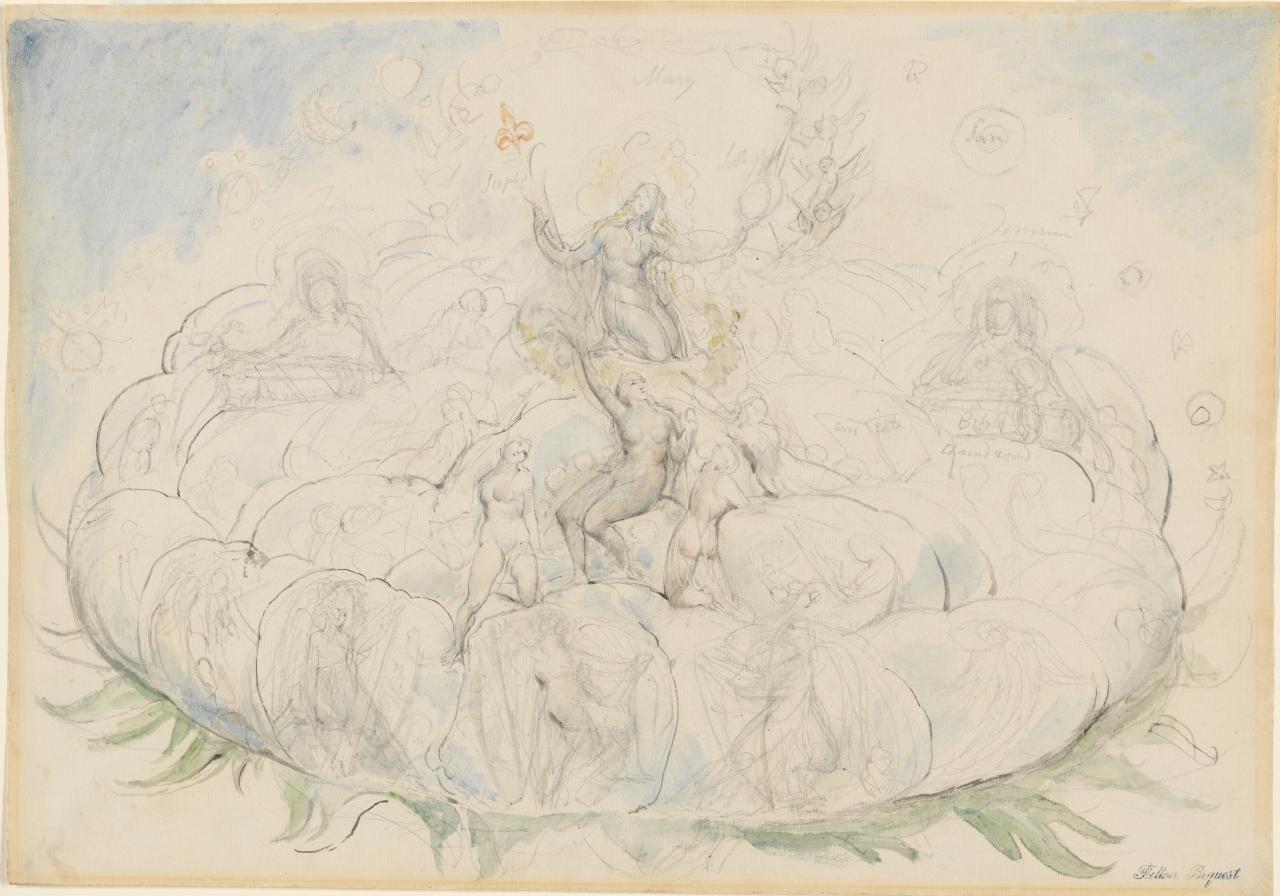
Image 1: Hell, Canto III, The Inscription over Hell-Gate (shown with color).

Image 2: Purgatory, Canto II, The Angelic Boat Wafting Over the Souls for Purgation.
 Image 3: Paradise, Canto XXXI, The Queen of Heaven in Glory (color added).
Image 3: Paradise, Canto XXXI, The Queen of Heaven in Glory (color added).
Dante's The Divine Comedy by William Blake, 1824-27
This collection of illustrations for Dante Alighieri's masterpiece La Commedia (The Divine Comedy) is a beautiful example of the artistry of the English painter and poet William Blake (1757-1827), and it is among the last works he did during his lifetime. The collection consists of 102 loose, photographed reproductions of the original drawings done by Blake. They are not bound together, but are contained in a box which is perfect for thier size.
In 1824, Blake was approached by a good friend of his, John Linnell, who commissioned him to create illustrations for the Divine Comedy. Linnell gave him a folio volume of around 100 pages for the drawings, and paid him a fair amount each week for the commission.
Although bedridden at the time, Blake threw himself into the project with great enthusiasm, and even learned Italian for the purpose of his project. However, due to his death in 1827, most of the drawings were unfinished, and the 102 drawings range from rough sketches to finished drawings. There are very few finished drawings, and only seven of them were actually engraved. Although Blake made 102 drawings, thsi collection here at UCLA contains 103. One plate was done both in black and white and in color, as an example of how Blake would have colored his drawings. The colored image is seen here in Image 1, above left.
Many of the drawings were put on display throughout the 1800s, and the collection as a whole remained together in the possession of the Linnell family until 1918, when they were bought by several public galleries and dispersed. Before they were dispersed, the National Art-Collections Fund (with the permission of the galleries) had all the drawings photographed and reproduced. Mr. Emery Walker photographed and reproduced the drawings on hand-made, English paper, and they were the same size as the original engravings. Only 250 sets have been printed, and the set that is at UCLA Special Collections is in very good condition. Because they are loose-leaf and not bound into a volume, there aren't any covers or spines to damge.
The loose images are all kept in a box that fits them perfectly, and a cloth that wraps around the edges of the pages serves as extra protection. It is clear that these materials have been taken good care of. Some of the pages have clean-cut edges and some are deckled. Some of the pages are slightly yellowed at the edge, but because of the high standard of Mr. Walker's paper, there are no significant chain lines, tears, or cockling. Each plate is printed on its own page, so there is no bleed-through, although the thickness of the paper would also have eliminated that problem.
Out of the 103 Plates that are included in the set, about two-thirds of them have to do with themes from The Inferno, and the rest cover Purgatory and Paradise. Because so many of the images have to do with Dante's journey through Hell, they are a strange mixture of beautiful, peaceful, and incredibly violent. Examples of these various moods can be found in "Hell, Canto V, The Circle of the Lustful," where very graceful, nude figures are swept along in a river which exemplifies Blake's sweeping and rather mythical style; "Hell, Canto VII, Dante and Virgil Crossing Toward the City of Dis," where a rough sketch depicts a sailboat drifts toward a lone tower; and "Hell, Canto XXII, Ciampolo Tormented by the Devils," where a devil peels apart a sinner's upper arm with a hook. Devils, angels, centaurs, three-headed dogs, giants, twisted creatures, and the damned souls of Dante's political enemies from Florence cover the pages of Blake's work, culminating in a gigantic Lucifer, who stands in the center of Hell devouring a sinner who's legs are sticking out of his mouth.
Some of the drawings in this section are sketches, but some also appear to be finished, or at least close to it. While there are 69 plates that show Hell, only 20 show Purgatory, the next stage of Dante's journey. While many of these drawings are beautiful and complex, most of them are clearly unfinished, with the exception of a few highly detailed drawings. Many of these images are either stern and solitary, or peaceful, and some are incredibly beautiful such as the unfinished "Purgatory, Canto II, The Angelic Boat Wafting Over the Souls for Purgation" (shown here in Image 2, right). Only 10 plates were drawn of Paradise, but they are some of the most beautiful in the collection. They depict scenes such as Dante and Christ, various angels, the Apostles, and Mary as Queen of Heaven (pictured here in Image 3, below right). This image of Mary is especially wonderful because, even though it's a fairly rough sketch, it's very beautiful and there are notes that Blake has made to himself on the page.
This unique mixture of Dante's classic work and Blake's expressive drawings (separated by over 500 years) are truly worth seeing, and show the best of both the Renaissance and the Romantic Age.
The background information for this spotlight all came from the anonymous Introduction that accompanied these drawings.
Resources
For more information on Dante Alighieri and William Blake, please look at the following resources.
Bloom, Harold. Dante Alighieri. Philadelphia: Chelsea House Publishers, 2003.
Fletcher, John Gould. "William Blake". The North American Review 218, no.815 (October 1923):518-528. Accessed February 27, 2018. Stable URL
"Dante Biography." The Biography.com website. Last modified December 14, 2016. Stable URL
Stevens, Bethan. William Blake. London: British Museum Press, 2005.
This spotlight exhibit by Erin McAllister as part of Dr. Johanna Drucker's "History of the Book and Literacy Technologies" seminar in Winter 2018 in the Information Studies Department at UCLA.
For documentation on this project, personnel, technical information, see Documentation. For contact email: drucker AT gseis.ucla.edu.